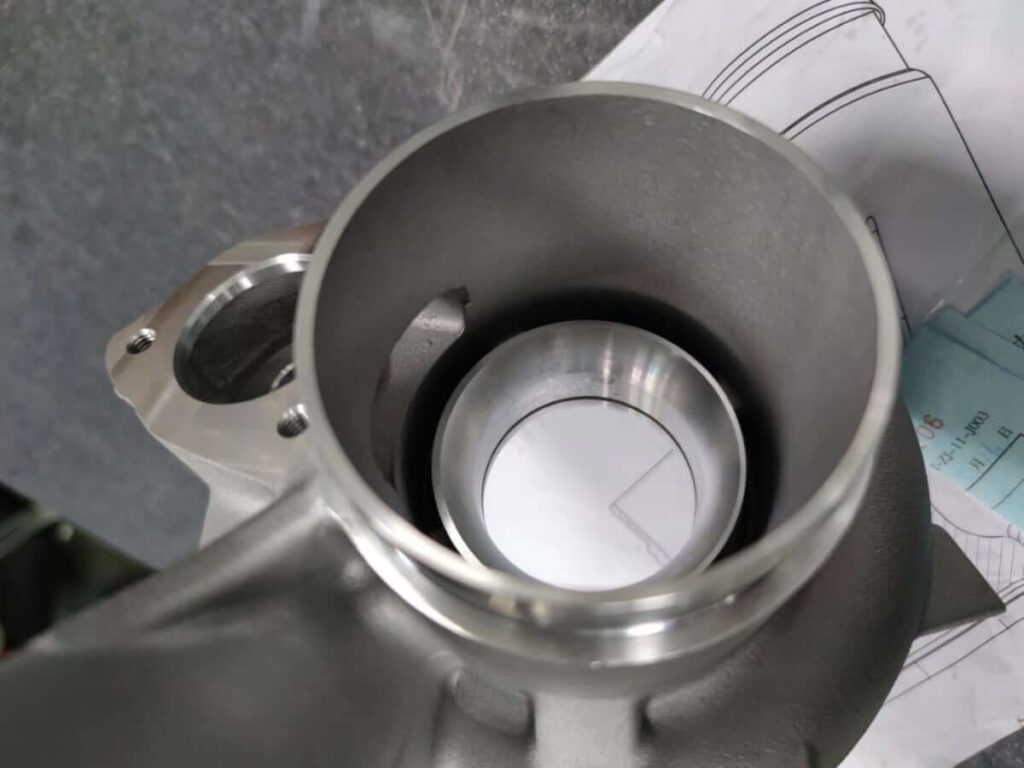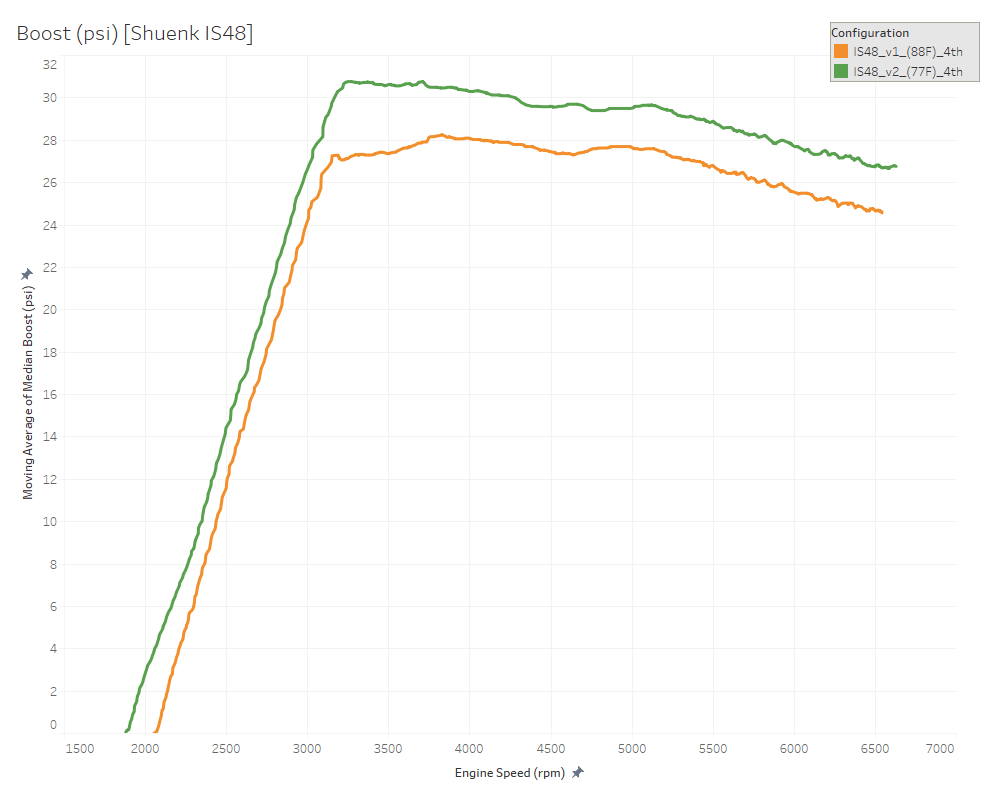Background:
After a couple of check-out drives with the Shuenk IS48, the process of tuning the ECU got underway with Russell Road and Racing.

Since the version of the IS48 turbo that I have includes an anti-surge compressor housing, the first goal is to see if it can be pushed into surge.

This post discusses the first two revisions of the ECU tune.
Test Conditions:
The outside temperature for the first two test sessions was 88F and 77F.

The first time out came on the heels of running some errands, which pushed up the intake air temperature.

Traction in 3rd gear during the checkout drives was becoming an issue, leading to the use of 4th gear for the data collection shown in this post.
Test Results:
The first session tune (v1) boost peaked around 28 psi and did not show any signs of compressor surge. For the second session (v2), the pressure was increased to just past 30 psi.

A couple of times, full throttle was requested slightly after 1,500 RPM in 4th gear, with no sign of compressor surge.

The turbocharger wastegate duty cycle increased approximately 10% with the 2 psi increase in boost pressure.

I have a requirement to retain the OEM knock thresholds, and to support this at the boost pressures this turbocharger is capable of, I have added ethanol to the 93 octane gasoline, increasing the ethanol percentage to 45% for these sessions.
This has been successful at minimizing occurrences of ignition timing retard due to potential knock.

Similar to other aftermarket turbochargers that are not from BorgWarner or Garrett, the IS48 doesn’t have a compressor map. The Shuenk IS48 compressor is similar in size to the Garrett G25-550 and G25-585. Maps for these compressors are used to estimate where the IS48 is operating.

Note: These maps show an estimate. Airflow values from the ECU are estimates, and the pressure ratio at the compressor is a function of the vacuum at the compressor inducer, which is unknown and is predicted based on the flow rate through intake components.
The vehicle acceleration rate with the higher boost tune is increased.

Computing the power and torque curves using Virtual Dyno indicates that the peak power increased from 411 whp to 440 whp and the peak torque increased from 404 ft-lbs to 429 ft-lbs from version 1 to version 2.

Conclusions:
The Shuenk IS48 turbocharger is installed on a Mk7 GTI, and ECU tuning is performed to test the resistance to compressor surge of the ported-shroud anti-surge compressor housing.
Two versions of ECU tunes are tested, boosting to 28 and 30 psi. When going full-throttle in fourth gear with the engine speed between 1,500 and 2,000 RPM, there is no sign of compressor surge.
The two psi increase in boost pressure corresponds to a 10% increase in the turbocharger wastegate duty cycle, an increase in the vehicle’s rate of acceleration, and an estimated increase in peak wheel horsepower by approximately 30 whp and wheel torque by approximately 25 ft-lbs.
Next:
With no sign of compressor surge under the conditions of this test, full-throttle in fourth gear at 1,500 RPM and boosting to 30+ psi by just past 3,000 RPM, there’s little value in trying to devise a more demanding test condition that might induce compressor surge, since this is already an abnormal operating condition.
The next focus of tuning will be on increasing the top-end boost pressure to determine where it leads to a disproportionate increase in the turbocharger wastegate duty cycle.

Pardon my ignorance but, what is the difference between this turbo and a Garrett or Vortex Standard?
In terms of size, it fits in between those two. The Vortex is similar to the Mabotech M520 turbo that I have used in the past, and is a ~500 whp turbo. The IS48 seems capable of around 440-450 whp with a similar setup.
I think the key differentiator is that the IS48 is intended to be a drop in alternative to an IS38+ that can reuse an OTS IS38 tune, or reuse an IS38 custom tune. The larger compressor wheel of the IS48 allows it to make the power that a tuned IS38 does, but at lower speed, to reduce stress on the turbochargers bearings. The power level that a tuned IS38 makes is pushing the IS38 compressor, whereas the IS48 compressor should operates more efficiently at the same power level.
So it’s advisable to use the is48 to make it more reliable in the long run.
Referencing the product description – “Designed for optimal compatibility & reliability with off-the-shelf IS38 turbocharger performance tuning.” That was a design goal of the company. I can only speculate, but it’s logical that operating at lower speed would improve reliability.
Thanks. I saw this on their website and got really excited that you are testing it. Keep up the good work.
Thank you!